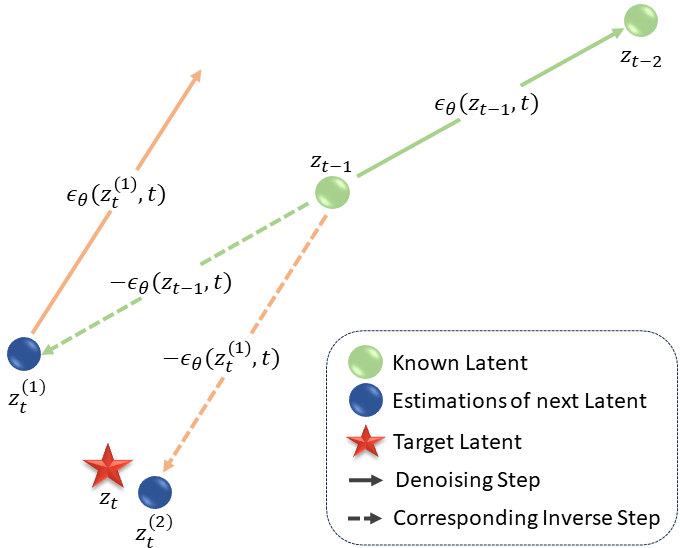
Recent advancements in text-guided diffusion models have unlocked powerful image manipulation capabilities. However, applying these methods to real images necessitates the inversion of the images into the domain of the pretrained diffusion model. Achieving faithful inversion remains a challenge, particularly for more recent models trained to generate images with a small number of denoising steps. In this work, we introduce an inversion method with a high quality-to-operation ratio, enhancing reconstruction accuracy without increasing the number of operations. Building on reversing the diffusion sampling process, our method employs an iterative renoising mechanism at each inversion sampling step. This mechanism refines the approximation of a predicted point along the forward diffusion trajectory, by iteratively applying the pretrained diffusion model, and averaging these predictions. We evaluate the performance of our ReNoise technique using various sampling algorithms and models, including recent accelerated diffusion models. Through comprehensive evaluations and comparisons, we show its effectiveness in terms of both accuracy and speed. Furthermore, we confirm that our method preserves editability by demonstrating text-driven image editing on real images.









Image reconstruction results comparing sampler reversing inversion techniques across different samplers (e.g., vanilla DDIM inversion) with our ReNoise method using the same sampler. The number of denoising steps remains constant. However, the number of UNet passes varies, with the sampler reversing approach increasing the number of inversion steps, while our method increases the number of renoising iterations. We present various configuration options for our method, including options with or without edit enhancement loss and Noise Correction (NC).

@misc{garibi2024renoise,
title={ReNoise: Real Image Inversion Through Iterative Noising},
author={Daniel Garibi and Or Patashnik and Andrey Voynov and Hadar Averbuch-Elor and Daniel Cohen-Or},
year={2024},
eprint={2403.14602},
archivePrefix={arXiv},
primaryClass={cs.CV}
}